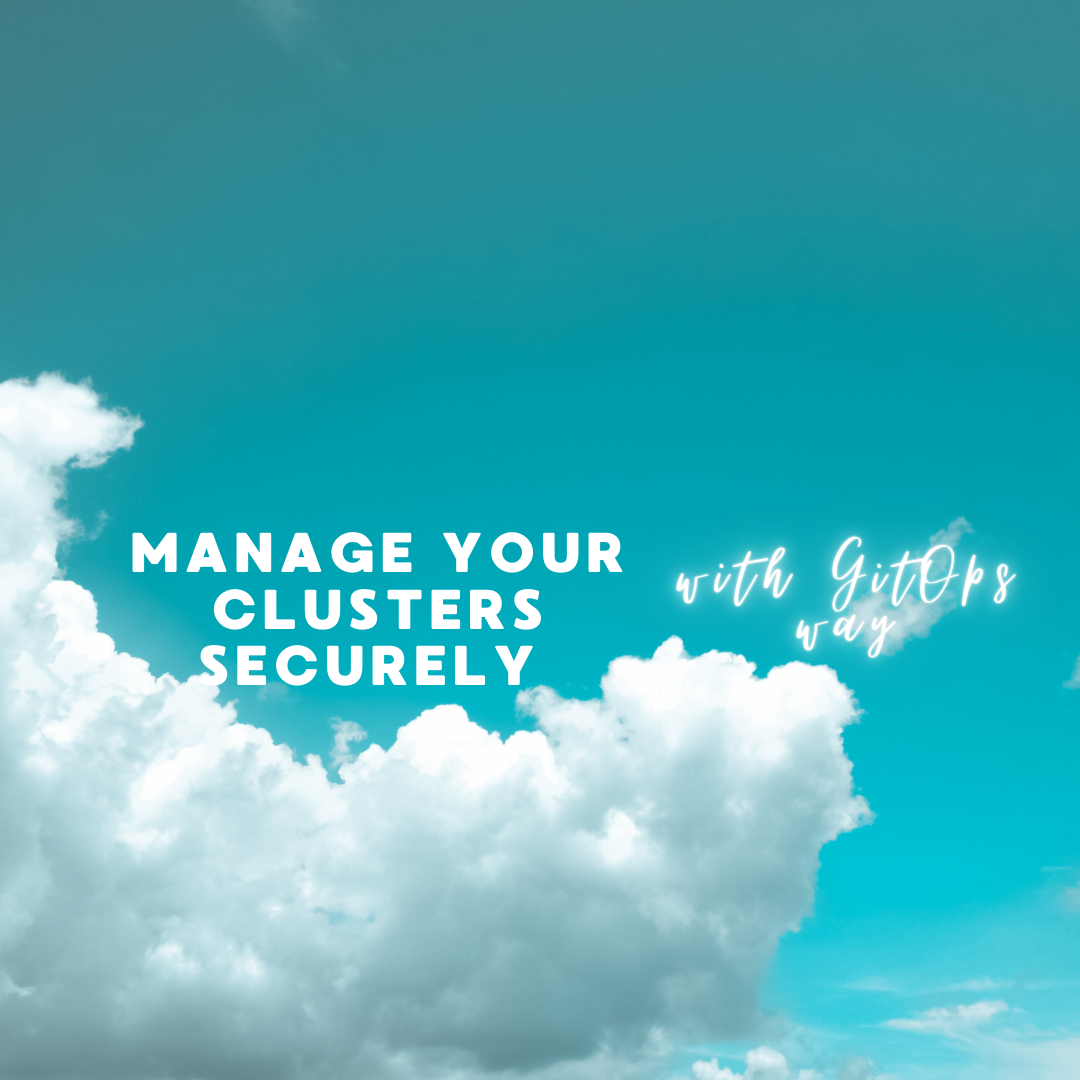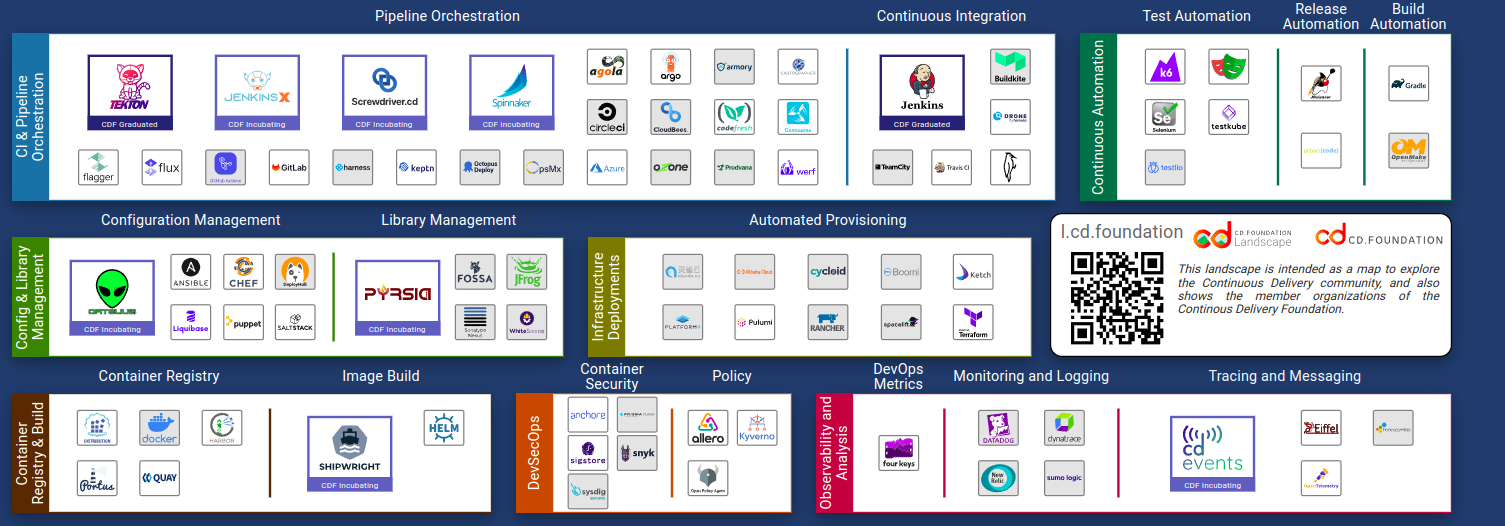Manage your clusters securely the GitOps way
 Afzal Ansari
Afzal Ansari
✨ Introduction
Hello Everyone, in this blog, I am going to focus on how to control cloud-native infrastructure with greater efficiency and reliability. Managing clusters securely is critical to the success of any cloud-native infrastructure. The GitOps way of managing clusters provides an approach that enables organizations to secure their clusters by storing the desired state of the infrastructure in a Git repository. GitOps makes it possible to maintain an auditable history of changes and provides a centralized location for managing access control and permissions.
Additionally, Cloud-native technologies and DevOps practices have also transformed the way software is built, tested, and deployed. DevOps is all about breaking down silos between development and operations teams and creating a culture of collaboration and continuous improvement. Cloud-native technologies are designed to enable scalable, resilient, and portable applications that can run anywhere, anytime.
💻 Introducing CDF landscape
Here, the above image I grabbed from CDF landscape page encircles the tools for the CI/CD pipeline leveraging the GitOps appraoch.
The landscape of tools and services for cloud-native continuous delivery is vast and complex. It can be overwhelming for organizations to select the right tools and services that fit their specific needs. The Continuous Delivery Foundation (CDF) has created a comprehensive landscape that includes both open-source and commercial tools and services. The landscape covers various categories, including continuous integration, deployment, testing, and monitoring.
For example, one of the essential tools for continuous delivery is a continuous integration (CI) server. A CI server automates the process of building, testing, and deploying code changes. One of the most popular open-source CI servers is Jenkins, which provides a robust plugin ecosystem and integration with a wide range of tools and services. For more details, you can follow up with these top blogs extensively talking about JenkinsCI.
Another critical tool for continuous delivery is a container orchestration platform. Kubernetes is the de facto standard for container orchestration and provides a powerful and flexible platform for deploying and managing containerized applications. Kubernetes is an open-source project that is supported by a broad ecosystem of tools and services, including Helm, Istio, and Prometheus.
Tips for leveraging the landscape of tools and services for cloud-native continuous delivery:
Start with a clear understanding of your requirements and constraints. Consider factors such as the size of your organization, the complexity of your applications, and your budget.
Focus on tools and services that have a proven track record and are well-supported by the community. Look for tools and services that integrate well with each other and can work together seamlessly.
Consider the trade-offs between open source and commercial tools and services. Open source tools and services are often more flexible and customizable but may require more expertise to set up and maintain. Commercial tools and services may be easier to use but can be more expensive.
Experiment and iterate. Continuous delivery is all about experimentation and continuous improvement. Try different tools and services, and be prepared to pivot if something is not working.
🤔 Why Sigstore?
One of the key challenges in cloud-native continuous delivery is managing secrets and configuration data. Sigstore is a tool that helps with secure software supply chain verification and signing in cloud-native continuous delivery. It is an open-source project developed by the Linux Foundation that aims to provide a transparent and secure method for software signing and verification using open cryptographic standards.
In cloud-native continuous delivery, the software is built, tested, and deployed frequently, often multiple times a day. It is critical to ensure that the software is authentic and free of any tampering or malicious code. Sigstore provides a way to verify the software's integrity and authenticity through digital signatures.
Sigstore uses the OpenID Connect protocol to authenticate the signer's identity and the OpenPGP standard to sign the software. The signed software is then stored in a public log, which can be audited by anyone to verify the software's authenticity.
An example of how Sigstore works in cloud-native continuous delivery is as follows:
A developer creates a new version of a software component and commits the changes to the source code repository.
The continuous integration and continuous deployment (CI/CD) pipeline picks up the new version and builds, tests, and packages it.
Before the packaged software is deployed to the production environment, it is signed using Sigstore. The signing process verifies the authenticity of the signer's identity and ensures that the software has not been tampered with.
The signed software is stored in a public log, which can be audited by anyone to verify the software's authenticity.
The CI/CD pipeline deploys the signed software to the production environment, ensuring that the software is authentic and free of any tampering.
Sigstore provides a transparent and secure method for software signing and verification that can be integrated into cloud-native continuous delivery pipelines. It can help ensure the authenticity and integrity of software components and reduce the risk of security breaches and vulnerabilities.
🔥 FluxCD leveraging Crossplane
Here, I will emphasise one of the GitOps tools broadly i.e. FluxCD which powers the cloud infrastructures effectively to manage and orchestrate leveraging Crossplane tools.
FluxCD is an open-source continuous delivery tool that can help manage deployments to Kubernetes clusters. It works by monitoring a Git repository and automatically synchronizing the state of the Kubernetes cluster with the desired state described in the Git repository. This approach allows for a more declarative and automated way of managing deployments to Kubernetes.
Crossplane is a tool that extends Kubernetes by providing a control plane for managing cloud resources across multiple cloud providers and on-premises environments. Crossplane allows organizations to abstract away the differences between cloud providers and manage cloud resources in a consistent and declarative way.
When adopting Crossplane in conjunction with FluxCD, organizations can manage both their Kubernetes resources and their cloud resources using a single, unified approach. This can lead to increased efficiency, reduced complexity, and more consistent management of resources across different environments.
🚀 Tips and an example
Here are some tips for using FluxCD with Crossplane:
Start with a clear understanding of your requirements and constraints. Consider factors such as the size of your organization, the complexity of your applications, and your budget.
Consider the trade-offs between using a single cloud provider versus multiple cloud providers. Using multiple cloud providers can provide increased flexibility and avoid vendor lock-in, but it can also increase complexity and require more expertise to manage.
Use GitOps practices to manage your Kubernetes resources. GitOps is a declarative way of managing deployments to Kubernetes that uses Git as the source of truth. FluxCD is a GitOps tool that can automate the process of synchronizing the state of the Kubernetes cluster with the desired state described in the Git repository.
Use Crossplane to manage your cloud resources in a consistent and declarative way. Crossplane provides a control plane for managing cloud resources across multiple cloud providers and on-premises environments. By using Crossplane, you can abstract away the differences between cloud providers and manage cloud resources in a consistent way.
Experiment and iterate. Continuous delivery is all about experimentation and continuous improvement. Try different tools and approaches, and be prepared to pivot if something is not working.
An example of how FluxCD and Crossplane can work together is as follows:
A developer creates a new version of a software component and commits the changes to the source code repository.
FluxCD picks up the new version and synchronizes the state of the Kubernetes cluster with the desired state described in the Git repository.
Crossplane detects that a new deployment has been created and provisions the required cloud resources in the appropriate cloud provider.
The new version of the software component is deployed to the Kubernetes cluster and the associated cloud resources are provisioned in the cloud provider.
The application is now running on the Kubernetes cluster and using the appropriate cloud resources provisioned by Crossplane.
By using FluxCD and Crossplane together, organizations can manage both their Kubernetes resources and their cloud resources in a consistent and declarative way, reducing complexity and increasing efficiency.
For more details, you can definitely check out this video on this from @Viktor Farcic.
⏭ What we understood! Summary
In conclusion, the landscape of tools and services for cloud-native continuous delivery is vast and complex, but it can be navigated with the right strategy and mindset. By leveraging the right tools and services, organizations can achieve faster time-to-market, better quality, and more robust and resilient applications.
By using FluxCD to automate the deployment of applications to Kubernetes, and Crossplane to provision the required cloud resources in a declarative and portable manner, organizations can achieve a more streamlined and consistent process for delivering applications.
Moreover, the adoption of Crossplane in recent organizations has been gaining momentum, as more and more organizations are looking for ways to simplify their infrastructure management and improve their cloud resource provisioning workflows. With Crossplane, organizations can use Kubernetes as a platform for managing their infrastructure, and benefit from the rich ecosystem of Kubernetes tools and services, such as FluxCD.
Subscribe to my newsletter
Read articles from Afzal Ansari directly inside your inbox. Subscribe to the newsletter, and don't miss out.
Written by

